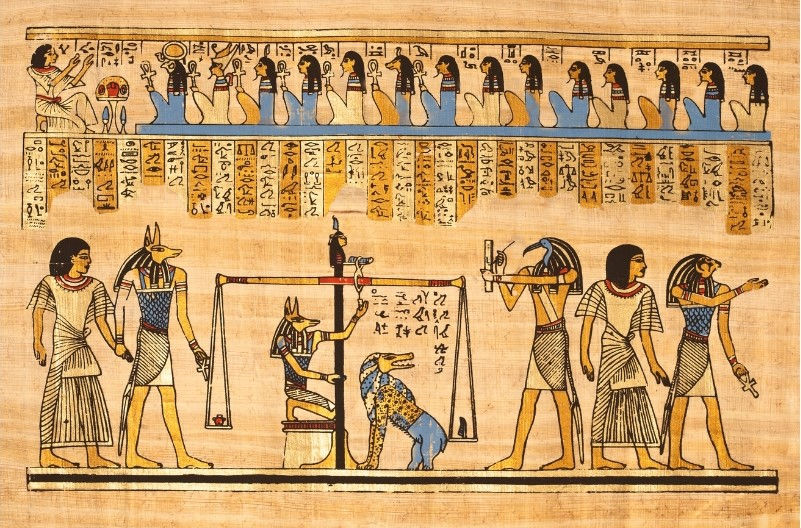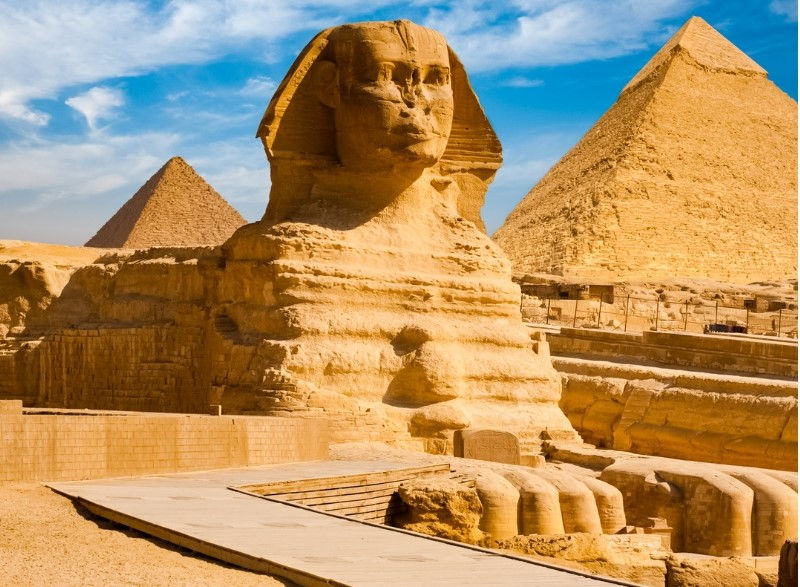10 Facts About Cats in Ancient Egypt and Why They Were Worshipped
- Rachel

- Sep 21, 2024
- 4 min read
Updated: 10 hours ago

It was long thought that the domestication of cats began in Ancient Egypt around 4,000 years ago when they started to appear in hieroglyphics and art, but these were likely to have been wild cats rather than the fluffballs we know and adore. In fact, evidence for taming the African wildcat has been discovered in Southern Cyprus that dates back to 7500-7200 BC, but scientists believe they were brought over from the Middle East and not a native species.
Cats had many practical roles in Ancient Egyptian society. Their predatory nature made them a perfect solution for killing vermin, such as rodents that destroyed crops; and chasing away venomous snakes and scorpions. They were also used on hunting trips to catch birds and fish from around the Nile River.
As agriculture grew, the domestic cat became more popular and was adopted by cultures around the world.
10 Facts About Cats in Ancient Egypt
1. Vessels for the Gods
While many aspects of the Ancient Egyptian civilisation remain a mystery, Egyptologists claim that they didn't generally worship animals; but they did believe that gods were created with animal heads and had the ability to shapeshift into full animals or humans. The heads were supposed to be physical manifestations of a god or goddess's divine powers and attributes. Cats were seen as vessels that the gods chose to inhabit, making them very sacred indeed.

2. Family and Fertility
While it's not clear if cats were worshipped as deities, some of what we know about their role in Ancient Egyptian life is shown in paintings on the walls of tombs. The tomb was an eternal resting place that depicted the life, family and achievements of the deceased. To see cats in their artwork suggests they were placed in very high regard.
Amongst these scenes are images of cats chasing birds, playing; and sitting or lying beneath the chairs of females. This could symbolise fertility, as cats can have many litters of kittens.
3. Protection
To expand on the above, cats are fiercely protective of their young and Ancient Egyptians believed they had the power to ward off evil spirits. They even wore feline amulets, such as cats' claws, to invoke divine protection.
Cats were used for much more than vermin control; they were guardians of the home and family. In return, people would protect cats from larger predators and give them shelter from the heat.

4. Mummification
Perhaps what cats are most famous for in Ancient Egypt, mummified cats were commonly used as funerary goods so the deceased could inhabit their bodies in the afterlife (in a similar manner to Egyptian deities). Mummified cats were also placed alongside their human companions so their spirit could live on and continue the role of protector.
5. Luck and Fortune
Pharaohs were known to keep large cats as pets, and members of Egyptian royalty dressed their cats in gold and let them eat from their plates. Wealthy families adorned their cats with jewels because they believed they had magical qualities that would bring good luck and fortune.

6. Crimes Against Cats
The killing of cats was forbidden in Ancient Egypt and faced capital punishment, even for a pharaoh. If the Egyptians got one thing right, it has to be this! Laws were also put into effect to prevent Egyptian cats from leaving the country.
There were a few exceptions to taking a cat's life, including population control and mummification. Archaeologists have found evidence that suggests millions of kittens were bred for the purpose of sacrifice and mummified so people could be buried alongside them. This shows a much darker side to the feline obsession in Ancient Egypt.
7. Grief and Mourning
Egyptians were so attached to their cats that to lose one was considered a tragedy, and families spent a lot of time in mourning. Some people would shave off their eyebrows as a mark of respect and to symbolise their pain and grief!
8. Cats' Eyes
Due to their association with the gods, Egyptians believed that cats could see into the human soul. Both men and women would draw on their makeup to make their eyes look like those of a cat, as we can see from the heavy kohl that was typical of Ancient Egyptians - although there were many other symbolisms behind their cosmetics and fashion.

9. Statues and Monuments
The Egyptians were so fascinated with cats that they created thousands of feline-esque statues, perhaps the most famous example being the Great Sphinx of Gaza: a 240-foot long monument that has the face of a man and the body of a lion. They even built the world's first known pet cemetery that largely consists of cats wearing iron and beaded collars.
10. Cat Goddesses
The Egyptians worshipped a few cat-headed deities. The first known goddess, Mafdet, was regarded as a protector of the pharaoh's chambers from snakes, scorpions and evil. She was often depicted with the head of a leopard or cheetah.
Bastet, the most important cat goddess, was known from the Second Dynasty onwards as daughter of Ra and Isis. She was originally worshipped as a fierce lioness-headed deity and was associated with the home, fertility and protector of pregnant women; as well as a ward against disease and evil spirits. Some myths follow the narrative that Bastet was mother to Anubis.

Bastet became more benevolent over time and her form changed to that of a cat, which reflected the shift in Egyptian society as cats became more domesticated. Her aggressive traits were passed onto the goddess, Sekhmet.
Sekhmet was sister to Bastet and daughter of the sun god, Ra. She was a lioness goddess, a warrior and protector who fended off enemies of Ra and kept sickness away.
Based on these 10 facts about cats in Ancient Egypt, we can see that they were regarded very highly as an important part of society; families and religion. Ancient Egypt is one of the most fascinating civilisations, and their worship of cats makes them all the more intriguing to me.
Perhaps, if you're a cat lover yourself, you share a past life with the Ancient Egyptians - although I won't be shaving off the ol' brows just yet!
Do you find yourself drawn to the Ancient Egyptian world or any other civilisations? Do you believe in these cat or "feline-headed" goddesses? Comment if you agree that our kitty companions deserve to be worshipped!


















Comments